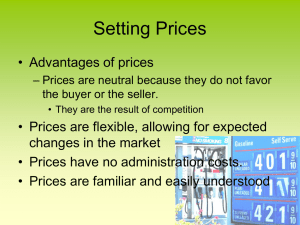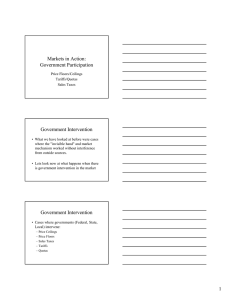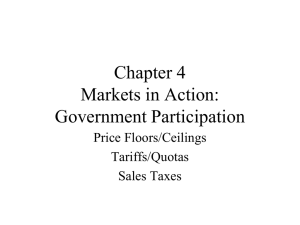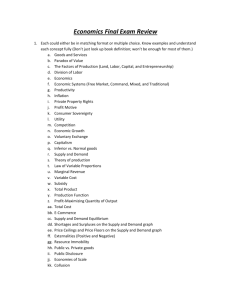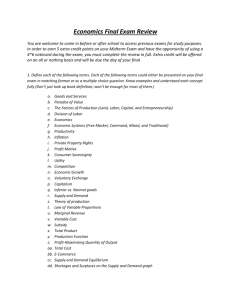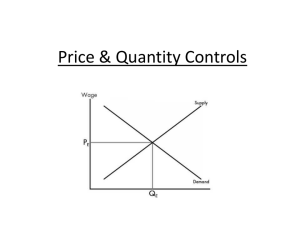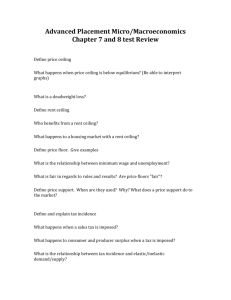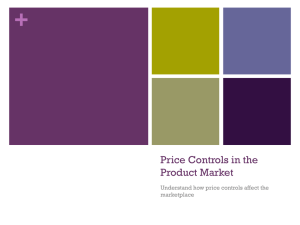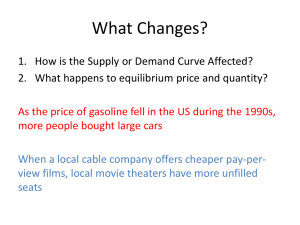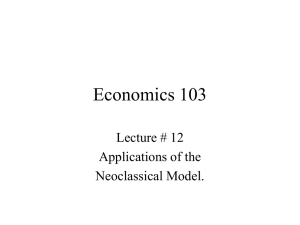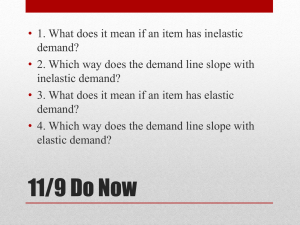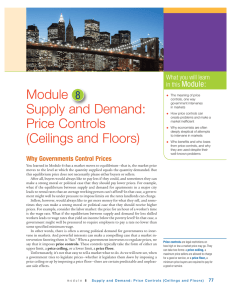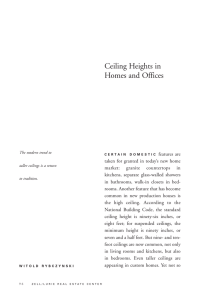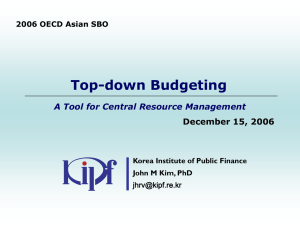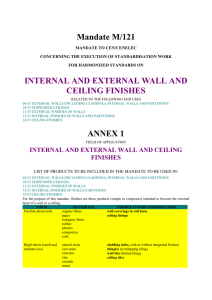Section 2: Supply and Demand
advertisement
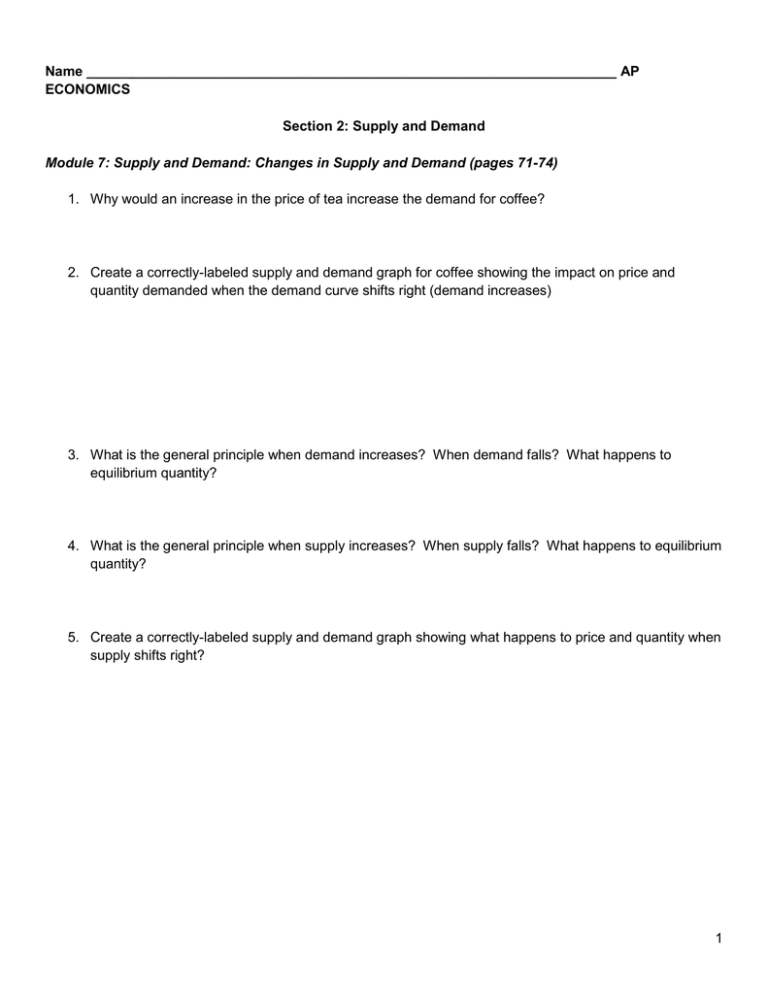
Name _____________________________________________________________________ AP ECONOMICS Section 2: Supply and Demand Module 7: Supply and Demand: Changes in Supply and Demand (pages 71-74) 1. Why would an increase in the price of tea increase the demand for coffee? 2. Create a correctly-labeled supply and demand graph for coffee showing the impact on price and quantity demanded when the demand curve shifts right (demand increases) 3. What is the general principle when demand increases? When demand falls? What happens to equilibrium quantity? 4. What is the general principle when supply increases? When supply falls? What happens to equilibrium quantity? 5. Create a correctly-labeled supply and demand graph showing what happens to price and quantity when supply shifts right? 1 6. What happens to equilibrium prices and quantities in each of the following scenarios? Under what conditions are changes in price and quantity indeterminate? Graph each scenario so that you can visualize the results. Demand increases, Supply decreases Demand decreases, Supply increases Demand and Supply both increase Demand and Supply both decrease. Module 8: Supply and Demand: Price Controls (pages 77-85) 1. Terms: a. price controls b. price ceilings c. price floor d. inefficient allocation to consumers e. wasted resources 2 f. inefficiently low quality g. black markets h. minimum wage i. inefficient allocation of sales among sellers j. inefficiently high quantity 2. Why do price floors and ceilings exist? 3. What are some examples of price floors? Of price ceilings? 4. What important assumption are we making when looking at the models for price ceilings and price floors? 5. Think about New York’s practice of rent control. What are the benefits of rent control? What are the costs? 6. Using a correctly-labeled supply and demand graph show the effects of a price ceiling. 7. When does a price ceiling not create a shortage? (Please note: When economists are talking about an effective price ceiling, they are referring to price ceilings set below market equilibrium.) 8. The term allocation is used within other terms. But what does the word itself mean? 9. Think about the example of a government set price floor (often called a price support). What is the benefit of a price support? What are the costs? 3 10. Using a correctly labeled supply and demand graph, show the effects of a price floor. Module 9: Supply and Demand: Quantity Controls (pages 88-93) 1. Terms: a. quantity control (quota) b. licenses c. demand price d. supply price e. wedge f. quota rent g. deadweight loss 2. Why do quotas exist? 3. Explain how quotas create deadweight loss. 4. Using a correctly-labeled supply and demand graph, show the effects of a quota. 5. Explain the relationship between the concepts quota rent and opportunity cost. 6. Explain what deadweight loss has to do with inefficiency. 4
